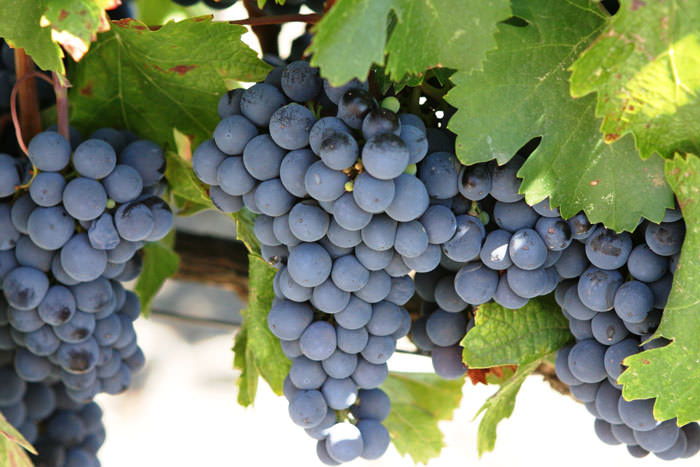January is a slow time of year in wine country in California. Although there is always plenty to be done in the vineyards like disking for cover crops, and we have pruning coming up soon, but it’s neither growing nor harvest time as far as grape growing cycle goes. And to us on the West Coast, it’s cold. It may be a warm spring day to those from the Northeast or Midwest, but here, around fifty degrees and rainy makes us grab our coats and hunker down by a fire.
Although it’s winter, and the grape growing season has paused, it’s still lovely here. With rain comes rainbows all over the valley, and beautiful misty mornings to wake up to. Plus, the daffodils and mustard blossoms are coming out to play, so expect beautiful golden fields and pockets of vibrant yellow if you visit us this time of year.
It’s also the season where, if you want to enjoy the outdoors, the best way to do so is to cozy up next to the firepit or in a heated pod, maybe with a glass of wine or two. While you’re cozying up with a Zinfandel or Merlot, enjoying the vast view of hibernating grapevines under the mountains, you may wonder how we grow our grapes to make the perfect wine.
Growing grapes: Soil matters
At Sierra Vista Winery, it’s crucial that our soil allows our grapes to grow and thrive so they can be approached and aged into the wines you enjoy. Our grape vines are planted on their own Vitis vinifera rootstock or grafted to Vitis vinifera rootstock, not grafted to other grape vine species. This practice keeps our grapes as purely related to their original heritage vines as possible. It also allows our grapes to grow as robustly as possible.
Like people, each type of grape is different, so our varieties of grapes grow in their own unique plots, best suited to their variety. In general, grapes’ roots reach deep into the soil, well over two feet. Some can even grow twenty feet or more into the soil! According to studies at UC Davis, biomass, the amount of soil the root covers, can spread over thirty feet. That’s a lot of roots!
Granted, our roots won’t necessarily get that wide. Vigorous roots are great for table grapes, but to produce bold, robust flavors that make impeccable wines, the roots need to struggle a little bit. Again, grape vines are like people – the ones who have it too easy are not interesting, they must struggle to build character. Our vines are arranged in a high-density planting with many on a quadrilateral trellis system to promote competition between the vines for water and resources. That’s why so many varieties of wine require porous soil to grow in that’s consistent all the way down, and our mix of decomposing granitic and volcanic soils are great for the vines.
Wine grapes can be grown in many varieties of coarse, porous soil. Our Syrah grapes are grown in decomposing granitic soil just like they would be in their native Northern Rhone Valley in France. Our Syrah vines’ heritage can be traced all the way back to Côte Rôtie and Hermitage, two areas known throughout the world for growing great Syrah in the Rhone Valley.
A notable variety that’s grown on our property is our Cabernet Sauvignon. Known as the “king of red grapes,” this varietal is the most planted grape and makes the most popular red wines worldwide for a reason. The bold, robust flavors of Cabernet Sauvignon can vary depending on the specific “terroir” the grape is grown in. Terroir is wine speak for how the combination of elevation, climate, soil, aspect (vineyard slope) can affect the taste of the wine. Our vineyard, specifically our growing space for our Cabernet Sauvignon, has its own unique terroir compared to Cabernet Sauvignon grown in other areas of the world, creating grapes that have robust, intense flavors, and balanced sugars and acidity.
Sunlight
Where our grapes are grown is also crucial to produce the best wines. We considered the directions the rows of our grapes are planted and the natural sunlight when we pick where to row our varietals. Some, like Picpoul Blanc, needs the cooler morning sunlight, as opposed the direct sun and heat of the afternoon) to keep its sugar levels lower. That way, the fruit stays on the vine longer and develops its bright acidity and citrusy fruit notes.
By contrast, we grow our Merlot at the top of the hill, our highest elevation at 2,800 feet, ensuring it gets sun all day. This produces a lighter, softer body of wine. Unlike our Picpoul Blanc, our Cabernet Franc is shaded in the morning, but gets plenty of afternoon and evening sun to allow it to develop a robust, fruity flavor that pairs well with the spicy notes that Cabernet Franc is known for.
To experience the finished product of our grapes, head on over to our shop and select from a wide variety of wines. Are you local or visiting us soon? Contact us about a wine tasting or to reserve a pod today. Space fills up fast!

